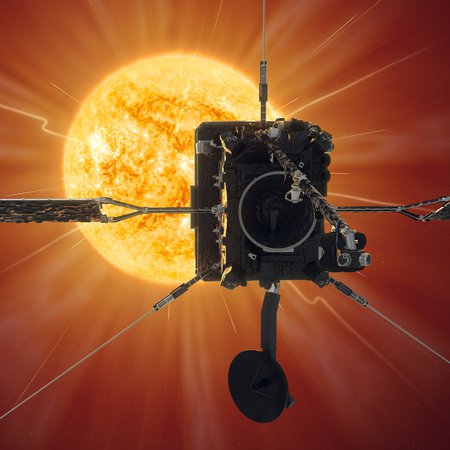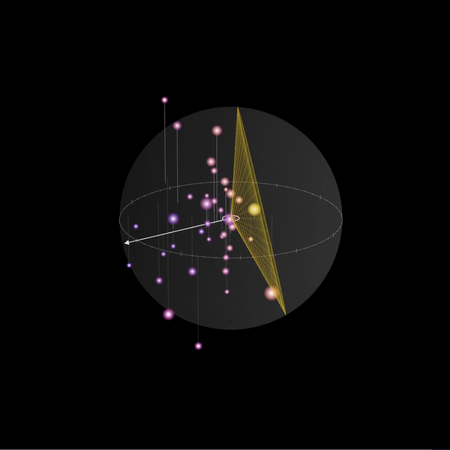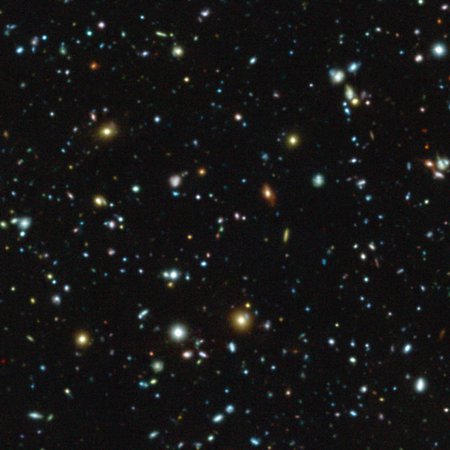Two new brown dwarf Solar neighbours discovered

False-colour images of the two brown dwarf discoveries WISE J0254+0223 and WISE J1741+2553 (composite of three images taken by the Wide-field Infrared Survey Explorer (WISE) with different filters in the infrared). In the WISE colours, the extremely cool brown dwarfs appear as yellow-green objects. The positions of the objects as observed by a previous near-infrared sky survey about ten years before the WISE observations are also marked. Every image covers a sky field about 200 times smaller than the full moon. After 700 and 1200 years, respectively, the proper motions of the two objects lead to a shift in their position as large as the full moon diameter.
Credit: AIP, NASA/IPAC Infrared Science ArchiveScientists from the Leibniz Institute for Astrophysics Potsdam (AIP) have discovered two new brown dwarfs at estimated distances of only 15 and 18 light years from the Sun. For comparison: The next star to the Sun, Proxima, is located slightly more than 4 light years from the Sun, whereas the nearest known brown dwarfs, epsilon Indi Ba and Bb, also found at the AIP several years ago, are about 12 light years away.
Scientists from the Leibniz Institute for Astrophysics Potsdam (AIP) have discovered two new brown dwarfs at estimated distances of only 15 and 18 light years from the Sun. For comparison: The next star to the Sun, Proxima, is located slightly more than 4 light years from the Sun, whereas the nearest known brown dwarfs, epsilon Indi Ba and Bb, also found at the AIP several years ago, are about 12 light years away.
Ralf-Dieter Scholz and his AIP colleagues used the recently published data of the NASA satellite WISE (Wide-field Infrared Survey Explorer) for their discovery. The two new Solar neighbours, named WISE J0254+0223 and WISE J1741+2553, attracted attention by the extreme contrast between their strong brightness in the infrared and their almost invisible appearance in optical light. In addition, both objects move at comparably large speed across the sky (proper motion), i.e. their positions are remarkably different with respect to earlier observations. This was a first hint of their vicinity that was confirmed by the comparison of their colours and magnitudes with those of other similar objects. The brighter of the two objects was visible on the night sky at the time of its discovery so that the AIP team could use the Large Binocular Telescope (LBT) in Arizona/USA for determining the spectral type and distance more accurately. Both objects belong to the coolest representatives of T-type brown dwarfs, just at the boundary to the predicted but not yet well-defined class of Y-type ultracool brown dwarfs.
Brown dwarfs are also called failed stars, since during their formation, they could not accumulate enough mass to ignite the natural nuclear fusion reactor in their core, that is the long-living energy source of stars. Therefore, their brightness decreases strongly with time. Presumably, most brown dwarfs have reached surface temperatures below the “oven temperature” of about 500 Kelvin (about 230 degrees Celsius), may be even as cool as the temperature at the surface of the Earth. The search for these elusive neighbours of the Sun is currently in full swing. It cannot be excluded that ultracool brown dwarfs surround us in similar high numbers as stars and that our nearest known neighbour will soon be a brown dwarf rather than Proxima Centauri.
Scientific paper:
Images
False-colour images of the two brown dwarf discoveries WISE J0254+0223 and WISE J1741+2553 (composite of three images taken by the Wide-field Infrared Survey Explorer (WISE) with different filters in the infrared). In the WISE colours, the extremely cool brown dwarfs appear as yellow-green objects. The positions of the objects as observed by a previous near-infrared sky survey about ten years before the WISE observations are also marked. Every image covers a sky field about 200 times smaller than the full moon. After 700 and 1200 years, respectively, the proper motions of the two objects lead to a shift in their position as large as the full moon diameter.
Big screen size [1000 x 494, 60 KB]
Original size [2702 x 1336, 240 KB]
The (un)known Solar neighbours. The stars are shown with symbols of different sizes and colours, roughly corresponding to their real sizes and spectral types. Most stars in the Solar neighbourhood are red dwarf stars of spectral type M (in the middle of the figure) with surface temperatures of slightly more than 2000 Kelvin. Proxima, our nearest known neighbour, also belongs to this class. The number of brown dwarf discoveries (almost all with spectral types L and T, and surface temperatures below 2000 K) is already higher than the number of white dwarfs (shown as small white dots at the top). The two nearest brown dwarfs, epsilon Indi Ba and Bb, the discovery of which was reported by the AIP in 2003 and 2004, and the newly found objects are marked.
Big screen size [1000 x 693, 90 KB]
Original size [3258 x 2258, 390 KB]
The Large Binocular Telescope (LBT) with its two 8.4 meter mirrors located at the Mt Graham International Observatory in Arizona, USA.
Big screen size [1000 x 669, 60 KB]
Original size [3872 x 2592, 440 KB]





